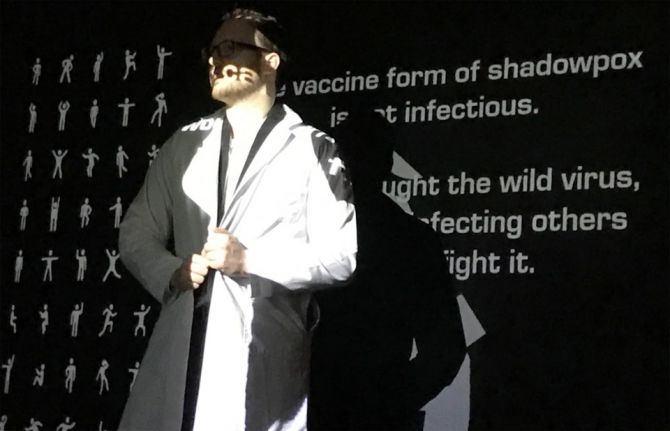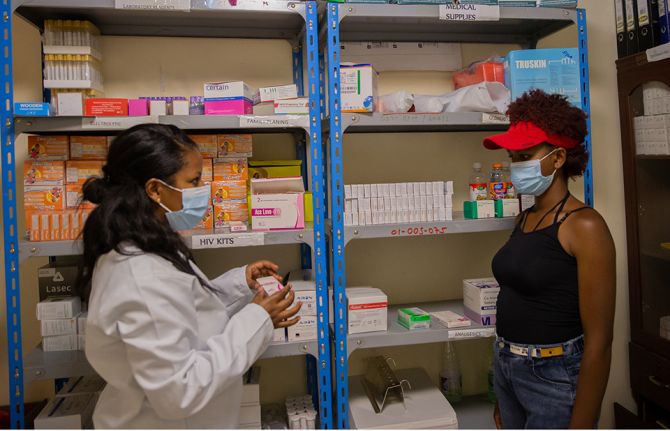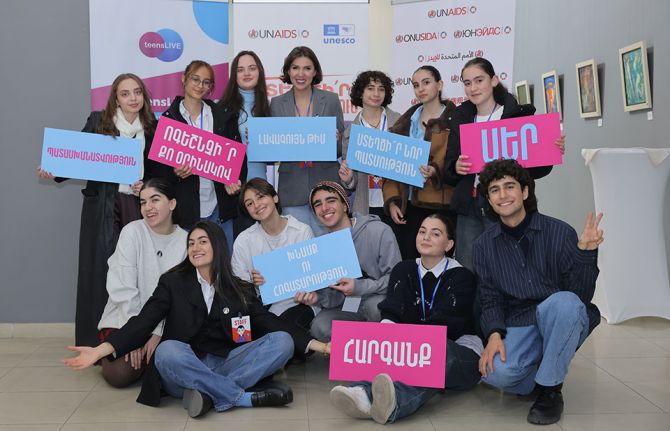

Feature Story
Immune Nations
23 May 2017
23 May 2017 23 May 2017In a dark room, you see a shadow of yourself on a large screen—white lights create spots that arc across the screen and onto your body.
It’s the deadly Shadowpox trying to infect you.
Watching your shadow-self on the screen, you try to sweep the spots off your body. More spots appear and you realize the virus isn’t just attacking you, it’s attacking everyone around you. What do you do now?
This is the type of question people are faced with in Shadowpox, an art installation that is part of the new Immune Nations exhibition. Using interactive projections, Shadowpox gives participants a unique experience of fighting a virus with a vaccine while trying to save the people around them by what public health officials call herd immunity—when enough people are immunized against a disease that other people who are not immunized have some protection against infection, because the spread of contagious disease is contained.
The questions and decisions people face when interacting with Shadowpox are similar to public health scenarios being played out around the world. And it is exactly the kind of thinking a grant by the Research Council of Norway tried to provoke by bringing artists, researchers and policy-makers into a room together to see how they might reframe the current discourse surrounding vaccination.
“We are interested in exploring the role that art and culture could have in informing global health decision-making,” said Steven Hoffman, a law professor at the University of Ottawa and co-lead of the Vaccine Project.
In the summer of 2015, renowned artists and experts gathered at the University of Ottawa, where concepts for the evidence-based art exhibition emerged. Shadowpox was imagined by a group of collaborators led by Alison Humphrey and Caitlin Fisher. The idea started with a new vaccine-preventable disease composed of viral shadows. The concept was part fact and part science fantasy. The mixed-reality installation combines real-world statistical data with live-animated digital effects. “The final work is equally stunning, fun and provoking—everything needed to engage people on the issue of vaccines,” said Natalie Loveless, a co-lead and curator for the exhibition.
The Vaccine Project is a multiyear collaboration that has spanned continents and cultures. “More than 100 people and organizations are collaborating on this exhibition,” said Sean Caulfield, a co-lead of the project. “We have representatives from virtual reality labs and universities to governments and the United Nations.”
The exhibition first premiered at Galleri KiT, Trondheim Academy of Fine Arts, in Norway in March 2017 and travelled to UNAIDS headquarters in Geneva, Switzerland, where it will be opened by the First Lady of Namibia Monica Geingos on 23 May. The works of art will be exhibited at UNAIDS until 30 June 2017.



